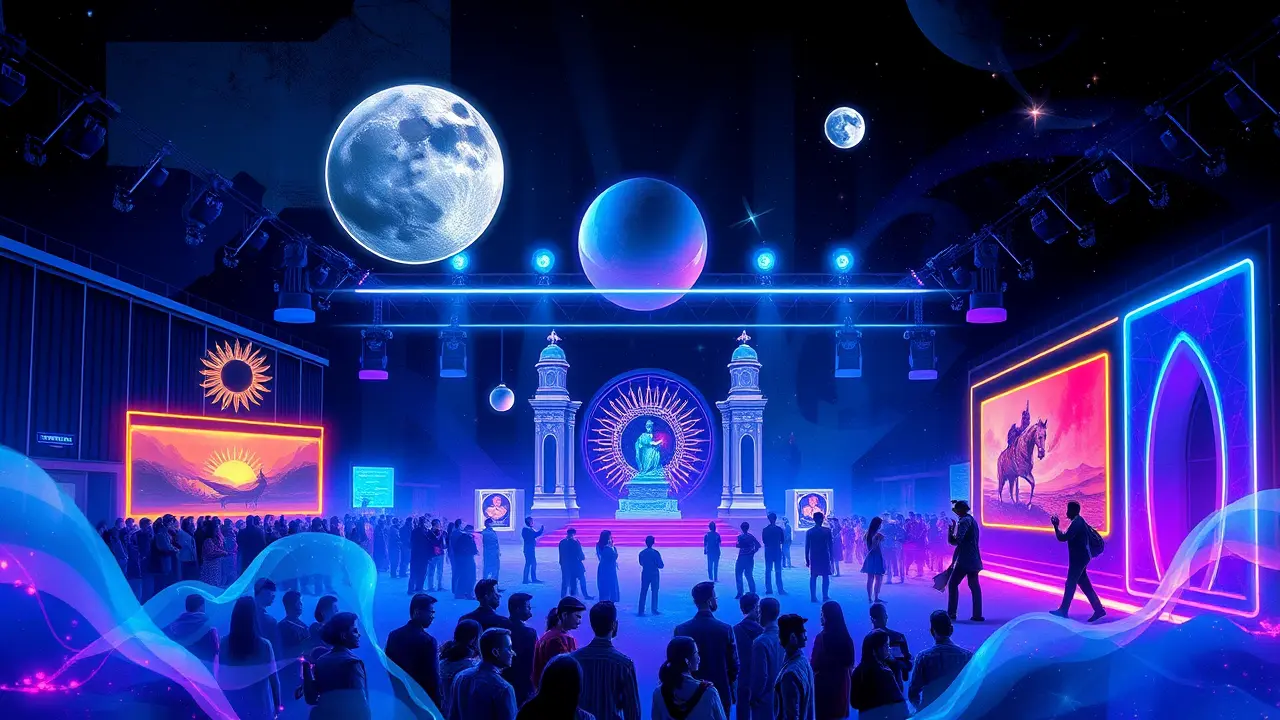Record Auctions Fuel India's Art Boom During Global Slump
While the global art market shivers through a protracted slump, a vibrant, defiantly colorful counter-narrative is unfolding in South Asia, where record-breaking auctions are not just making headlines but are minting millions and fundamentally reshaping the cultural economy. This isn't your grandfather’s staid art scene; it’s a dynamic, digitally-accelerated renaissance, a cultural bull run playing out on the global stage with all the fervor of a generative art NFT drop.Picture the scene: a packed auction hall in Mumbai, the electric buzz more akin to a tech product launch than a traditional sale, as paddles fly for a Tyeb Mehta or a Vasudeo S. Gaitonde, works that are smashing pre-sale estimates and achieving prices once thought impossible for modern Indian masters.This isn't isolated; from Delhi to Bangalore, galleries are reporting unprecedented interest, a tidal wave of new collectors—tech entrepreneurs, crypto-native investors, and a burgeoning diaspora—flocking to acquire tangible pieces of a rapidly modernizing national identity. The contrast with the West is stark; where major auction houses in New York and London are seeing cautious bidding and cooling demand, the Indian market is a festival of confidence, driven by a potent cocktail of new wealth, profound national pride, and a generational shift in collecting philosophy.These buyers aren't just acquiring assets; they're curating heritage, investing in a visual language that speaks to a complex, post-colonial identity, much like how early NFT collectors saw themselves as patrons of a new digital frontier. The very aesthetics of the works fueling this boom—the fractured forms of the Progressive Artists' Group, the sublime minimalism of the Baroda school—resonate with a global, contemporary sensibility, their narratives of struggle and synthesis finding new audiences.Experts point to a perfect storm: the maturing of India's financial ecosystem creating vast new fortunes, the powerful storytelling of institutions like the Museum of Art & Photography in Bangalore, and a post-pandemic reevaluation of what constitutes meaningful cultural capital. The consequences are profound, creating a virtuous cycle where soaring prices fund new galleries, support living artists, and inspire a fresh wave of creativity, effectively building a self-sustaining cultural infrastructure from the ground up. Yet, beneath the glittering surface, questions linger about sustainability and accessibility—will this boom democratize art or simply create a new elite? For now, however, the story is one of unbridled momentum, a testament to the fact that in a digitally interconnected world, the next great art market isn't being discovered in a traditional capital; it's being passionately built, brushstroke by record-breaking brushstroke, in the bustling creative epicenters of a rising India.
It’s quiet here...Start the conversation by leaving the first comment.
© 2025 Outpoll Service LTD. All rights reserved.
